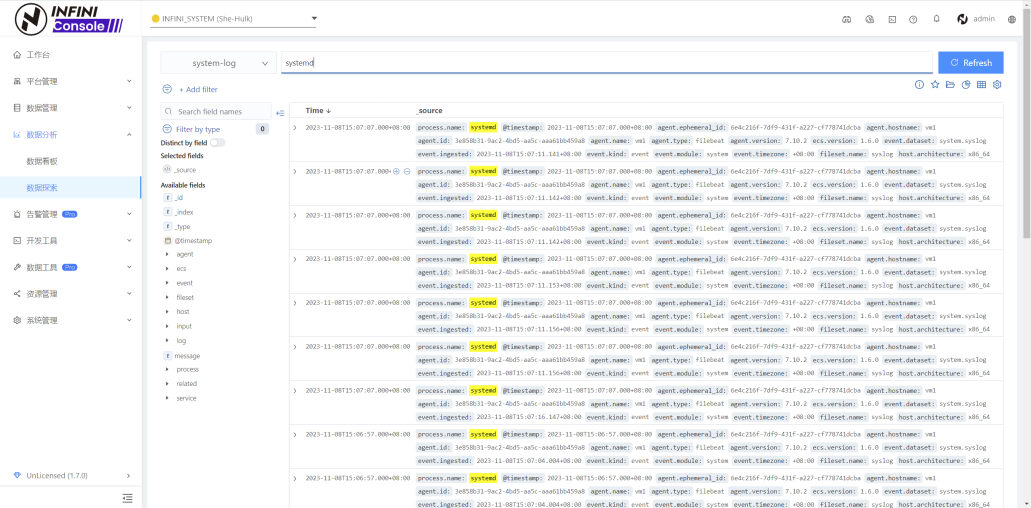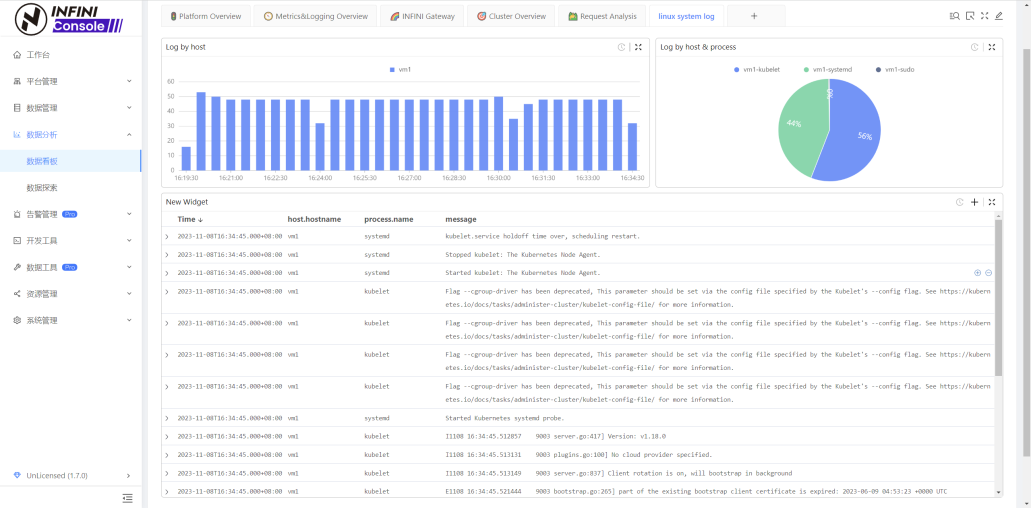近年来,日志管理平台越来越流行。使用日志管理平台可以实时地、统一地、方便地管理和查看日志,挖掘日志数据价值,驱动运维、运营,提升服务管理效率。
方案架构

-
Beats 是轻量级采集器,包括 Filebeat、Metricbeat 等。
-
Easysearch 是个分布式搜索引擎,提供搜集、分析、存储数据等主要功能。
-
Console 是一个可视化工具,提供可视化查询,制作报表等功能。
本文将搭建一个统一日志管理平台。使用 Filebeat 采集 OS 中的日志(其他日志大同小异),发送到 Easysearch 中。最后通过 Console 进行日志的可视化查询与分析。
操作步骤
- 准备工作
-
部署 Easysearch
-
编辑 easysearch.yml 文件,打开注释 elasticsearch.api_compatibility: true
-
部署 Console
- 安装并配置 Filebeat
-
下载 Filebeat,版本建议选择 7.10.2。下载地址:https://www.elastic.co/cn/downloads/past-releases/filebeat-oss-7-10-2
-
修改配置 filebeat.yml 文件
setup.template.name: "filebeat"
setup.template.pattern: "system-log*"
setup.template.fields: "${path.config}/fields.yml"
output.elasticsearch:
hosts: ["localhost:9200"]
protocol: "https"
ssl.verification_mode: none
username: "admin"
password: "4ad8f8f792e81cd0a6de"
index: "system-log"
- 启用 system 模块并导入 pipeline
./filebeat modules enable system
./filebeat setup --pipelines --modules system
- 创建索引模板及初始索引,使用 ZSTD+SOURCE_REUSE 技术节省磁盘空间
PUT _template/system_log
{
"order": 100,
"index_patterns": [
"system_log*"
],
"settings": {
"index": {
"format": "7",
"lifecycle": {
"name": "ilm_.infini_metrics-30days-retention",
"rollover_alias": "system_log"
},
"codec": "ZSTD",
"source_reuse": true,
"number_of_shards": "1",
"translog": {
"durability": "async"
}
}
},
"mappings": {
"dynamic_templates": [
{
"strings": {
"mapping": {
"ignore_above": 256,
"type": "keyword"
},
"match_mapping_type": "string"
}
}
]
}
}
PUT system-log-00001
{
"aliases":{
"system-log":{
"is_write_index":true
}
}
}
- 启动 filebeat
nohup ./filebeat -c filebeat.yml 2>&1>/dev/null &
- 进入 Console 查看、搜索日志

- 进入 Console 创建 dashboard 进行日志分析


 随时随地看视频
随时随地看视频




